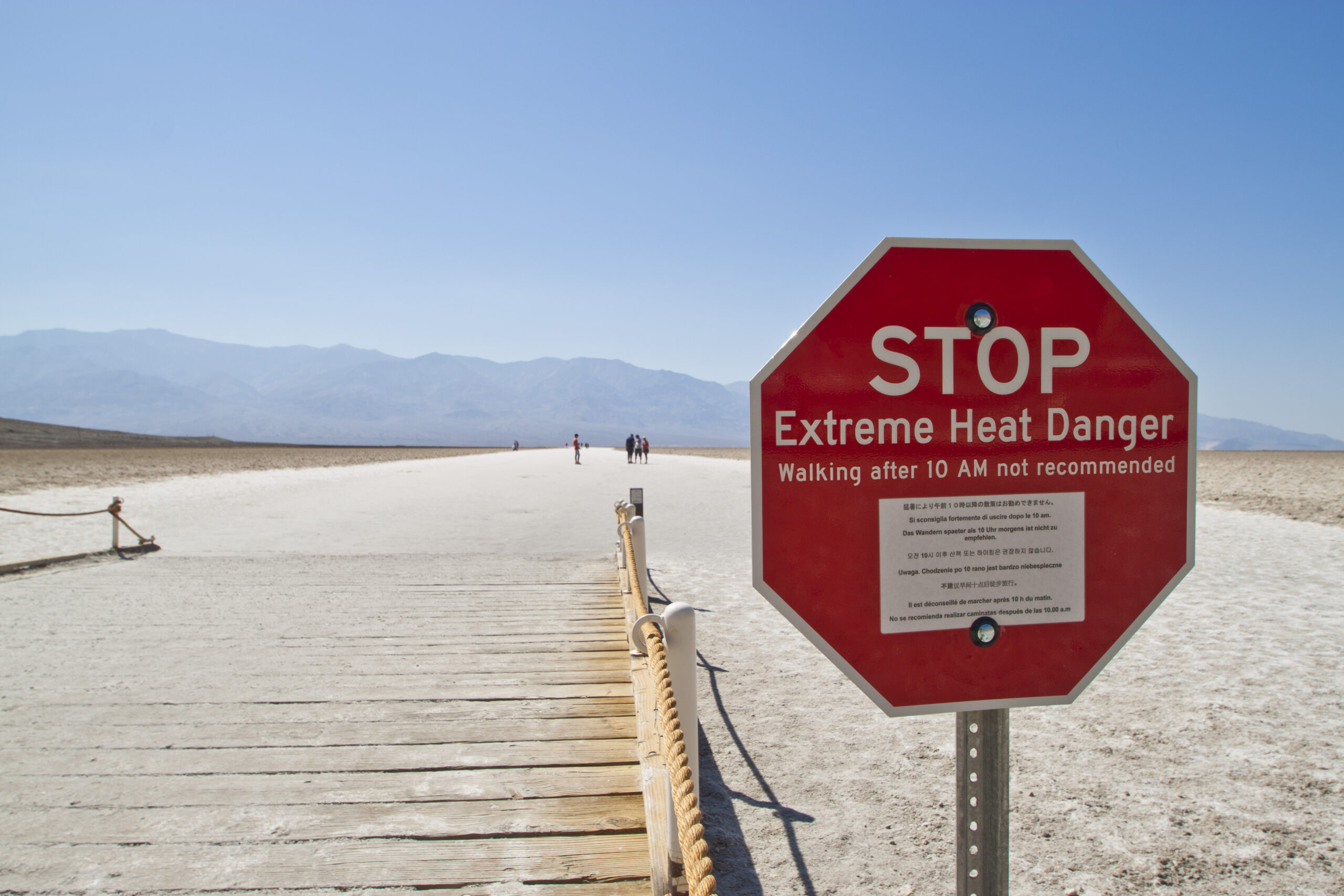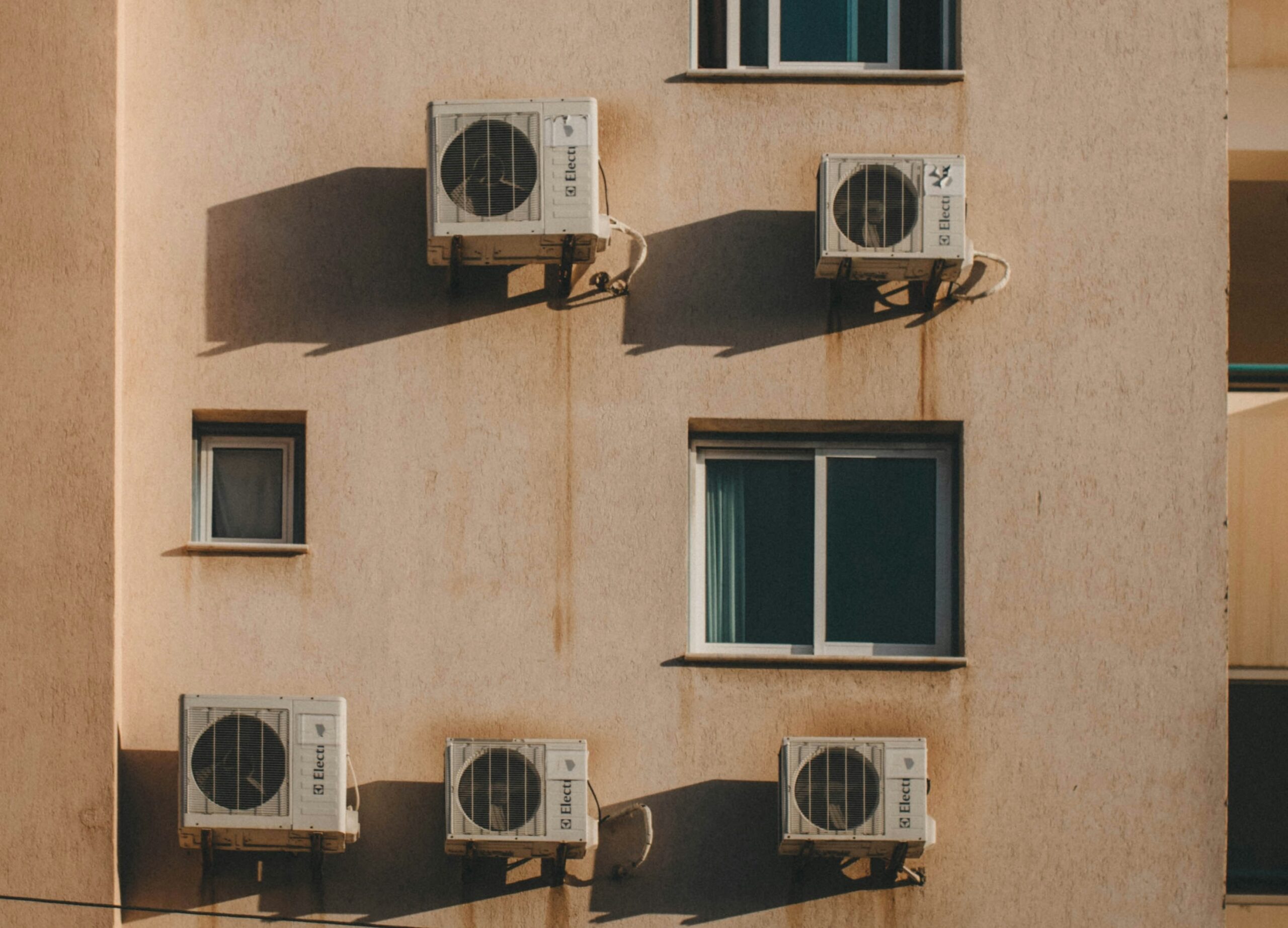
Extreme Heat
Extreme heat, or heat waves, are periods of unusually high temperatures relative to what is considered normal for a specific location and time of year. In the U.S., heat kills roughly 1,300* people per year, which is more than hurricanes, floods and tornadoes combined.
What is extreme heat?
- The National Weather Service (NWS)* defines a heat wave as “a period of abnormally hot weather generally lasting more than two days.”
- Heat waves are among the deadliest natural hazards.
- Extreme heat worsens drought conditions and wildfire risk.
There is no standard definition of extreme heat because definitions vary globally based on local climate averages and thresholds. Driven by atmospheric high pressure and increasingly influenced by climate change, heat waves are becoming more frequent and intense, with studies showing their likelihood has risen dramatically in recent years.

Who is affected by extreme heat and how?
- Heat waves expose and exacerbate inequities, leaving some people more at risk than others.
- Exposure to heat can cause severe symptoms, such as heat exhaustion and heat stroke.*
- Heat causes 500,000 deaths a year around the world.**
Deaths from heat waves are measured using excess mortality studies, which examine how many more people died on a specific day compared to that same day in other years. The additional deaths are considered “extra deaths” related to the heat wave.
Heat can cause a variety of health problems, including severe dehydration, blood clots, organ damage, stroke, skin rash and death. People with chronic diseases are at greater risk of complications during a heat wave, as are pregnant people, older adults and young children. Those dependent upon certain medications, including many psychiatric medicines, are also at increased risk of heat-related illnesses.
In U.S. cities, residents of low-income neighborhoods and/or communities of color endure far higher temperatures on average than people who live in whiter and/or wealthier areas. In New York, affluent neighborhoods are more likely to have households with air conditioning. Tree cover, which can defend people against the sun and decrease surface temperatures, is lower in minority neighborhoods in the U.S., and Black Americans are less likely to have access to air conditioning.
Laborers (often immigrants) who must work outside are particularly vulnerable to extreme heat, which exposes them to illness or decreases their number of workable hours, exacerbating economic hardship.

Where does extreme heat happen?
- Extreme heat happens almost everywhere.
- "Heat islands” are urbanized areas that experience higher temperatures than outlying areas.*
- Heat waves occur on every inhabited continent.
According to the U.S. EPA, daytime temperatures in urban areas are about 1–7 degrees Fahrenheit higher than in outlying areas. Population and infrastructure density, as well as energy burn off, are causes of the heat island effect. As the climate warms, people who live in cities will face higher temperatures and stronger heat waves in the future.
However, rural communities are also uniquely affected by extreme heat. Rural areas in the U.S. suffer from a major shortage of health care professionals and are less likely to have public health departments, the first responders in heat waves. People in rural communities are twice as likely to have pre-existing health conditions that are worsened by heat compared to those living in urban areas, and they are more likely to be uninsured or underinsured.
Across the world, billions of people experience “energy poverty,” and there is a significant “cooling divide.” Even if someone has an air conditioner, they may not be able to afford to run it. A recent study on the cooling divide found that “over one billion people are at high risk due to a lack of access to cooling, 309 million of whom are among the rural poor and 695 million among the urban poor.”

Why does extreme heat occur?
- High-pressure systems trap and compress air, causing it to warm.
- “Heat domes” are shifts or stagnation in the jet stream that allow high-pressure systems to form and remain stationary, leading to extended periods of high heat.*
- Heat waves are most common in summer, when the higher angle of the sun and longer daylight hours deliver more direct solar energy to the surface.
Extreme heat is caused by high-pressure systems, known as anticyclones, that settle over an area, blocking the cooling effects of winds and inhibiting cloud cover. In response, air sinks and then compresses as it moves downward, which raises surface temperatures. At the same time, these systems inhibit cloud formation and block other weather patterns, ensuring clear skies and uninterrupted solar heating. This “dome” effect traps hot air near the surface, preventing it from escaping and allowing heat to accumulate, leading to the extreme, persistent temperatures characteristic of a heat wave.
The global demand for air conditioning, which saves lives in the short term, contributes to climate change in the long term by exacerbating carbon emissions, further warming the planet. This is called maladaptation.

How can funders help?
Support the development of heat mitigation and response plans.
Heat waves will increase in frequency and intensity as the climate warms, stressing underprepared regions. Communities should develop strategies to prepare for heat-related risks and include the participation of at-risk populations. Funders can help by investing in climate change adaptation efforts to mitigate the effects of heat in the future.
Providing access to sustainable air conditioning through special programs and increasing the quality and quantity of community cooling centers are promising short-term approaches. Energy assistance plans can help low-income tenants and homeowners cover air conditioning costs. Increasing vegetation, especially in neighborhoods without much greenery, will help stem the effects of heat in the long term.
Municipal governments play an essential role in supporting heat response. The Hot Weather Response Coordinating Committee in Toronto comprises city staff and partners in the Heat Relief Network and is tasked with creating an annual Heat Relief Strategy.
Jane Gilbert became the world’s first Chief Heat Officer in 2021 for Miami. Her position was funded through a challenge grant from the Adrienne Arsht-Rockefeller Foundation Resilience Center. Now, there are chief heat officers in Greece, Australia, Sierra Leone, Bangladesh, England and France.
Funders can help communities adapt to extreme heat by investing in green spaces and corridors, cool roofs, community pools, public climate shelters, mobile cooling stations and coordinating check-ins to support at-risk neighbors.
Learn more
Additional resources
- World Health Organization: Heat and Health
- U.S. Environmental Protection Agency: Climate Change Indicators – Heat Waves
- Ready.gov: Extreme Heat
- CDP Issue Insight: Climate Change
- CDP Issue Insight: Drought
- Atlantic Council: Chief Heat Officers
- Cool Coalition
Sources
Overview
What is extreme heat?
Who is affected by extreme heat and how?
Where does extreme heat happen?
Why does extreme heat occur?